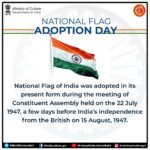IRNSS: INDIA’S SECOND NAVIGATION SATELLITE

India on Friday successfully launched its second navigational satellite IRNSS-1B onboard PSLV C-24, taking a step closer to realising its ambitious programme ofestablishing an independent regional space-based navigation system. Currently only powers like the US’s Global Positioning System (GPS) and Russia have their navigational satellites (GLONASS) fully operational. The European Union is working on an ambitious project called Galileo which won’t be fully operational before 2020.China has its own regional navigation system called Beidou which it is in the process of expanding. Japan and France too are working to set up their own navigation satellites network. India will be only the second developing country after China to have a network of navigation satellites which it will inevitably beef up in subsequent years, well in time before the ten-year lifespan of IRNSS comes to an end.
CONTEXT: The satellite, IRNSS-1B, launched by the Indian Space Research Organization (ISRO), is part of the seven navigation satellites project known as the Indian Regional Navigation Satellite System (IRNSS). ISRO had successfully put into orbit India’s first dedicated navigational satellite, the IRNSS-1A, was on July 1, 2013. The successful launch of the two satellites under the IRNSS program has catapulted India into a select group of nations with indigenously developed navigation systems. Once the seven satellite IRNSS program becomes fully operational by 2016, it will not only positively impact the lives of common Indians but will also be a strategic game-changer with its immense defense, security and counter-terrorism applications.
REFRENCE:
IRNSS: Indian Regional Navigation Satellite System will provide two types of services: (i) Standard Positioning Service (SPS), which has civil usage and will be provided to all the users; and (ii) Restricted Service (RS), an encrypted service provided only to the authorized users, mainly to security and intelligence organizations.
Main features of IRNSS
• It will provide a position accuracy of better than 20 meters in the primary service area.
• IRNSS consists of a space segment and a ground segment; the space segment comprising seven satellites, with three satellites in geostationary orbit and four satellites in inclined geosynchronous orbit.
• IRNSS satellites would revolve round the earth at the height of about 36,000 kilometers from the earth’s surface.
• It will be useful in land, sea and air navigation, disaster management, vehicle tracking and fleet management, integration with mobile phones, provision of precise time, mapping, and navigation aid for hikers and travelers, visual and voice navigation for drivers.
• It can track people or vehicles and can be of immense use in disaster situations like last year’s flashfloods in Uttarakhand.
• It will be a boon for the railways for tracking wagons.
• A highly accurate Rubidium atomic clock is part of the navigation payload of the satellite
The Polar Satellite Launch Vehicle, usually known by its abbreviation PSLV is the first operational launch vehicle of ISRO. PSLV is capable of launching 1600 kg satellites in 620 km sun-synchronous polar orbit and 1050 kg satellite in geo-synchronous transfer orbit. In the standard configuration, it measures 44.4 m tall, with a lift off weight of 295 tonnes. PSLV has four stages using solid and liquid propulsion systems alternately. The first stage is one of the largest solid propellant boosters in the world and carries 139 tonnes of propellant. A cluster of six strap-ons attached to the first stage motor.
ISRO: it was established with its headquarter at Bangalore in 1969. It functions under overall control of department of space.Dr. K. Radhakrishnan; the current Chairman of Space Commission, Secretary, Department of Space, Government of India and Chairman of ISRO
GLOBAL POSITIONING SYSTEM(GPS): it is a satellite based navigation system that gives accurate information to its users about locations indicating the latitude, longitude and altitude and helps aircraft, spacecraft, submarines and ships to mark their positions accurately. It is also used by defence forces to increase the level of accuracy of missiles, long range artillery guns and battle tanks.






0 Comments